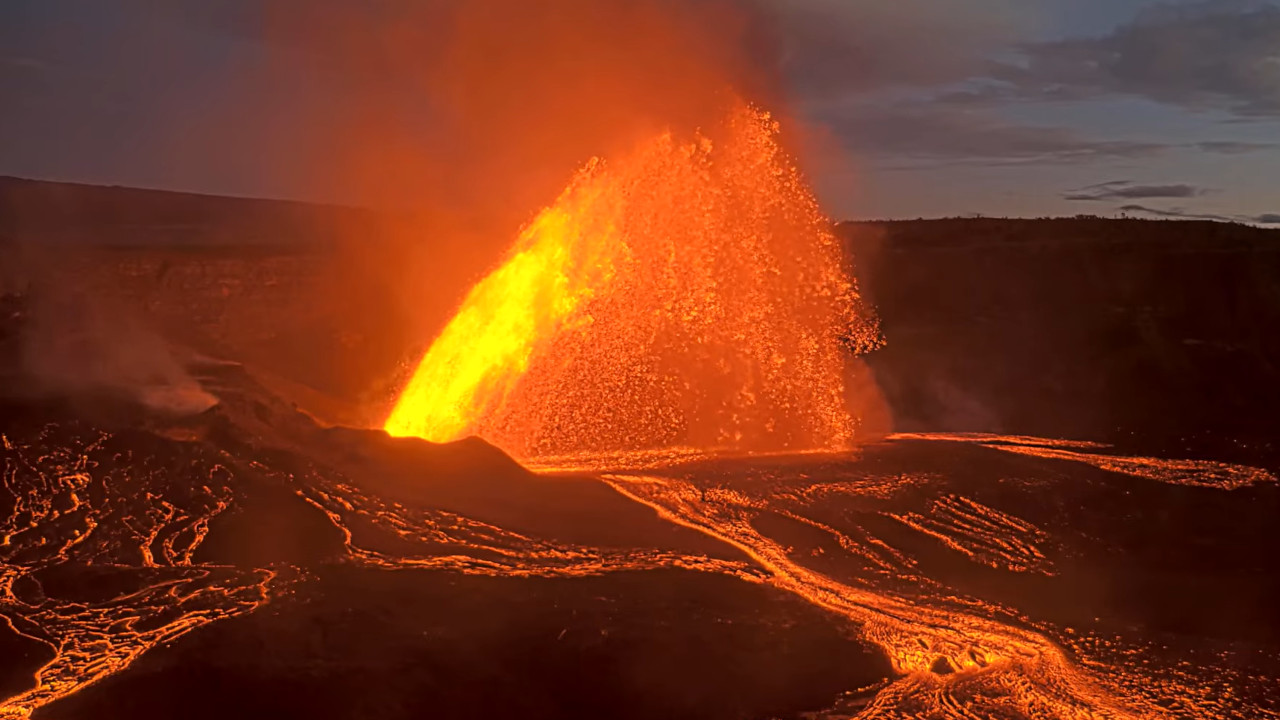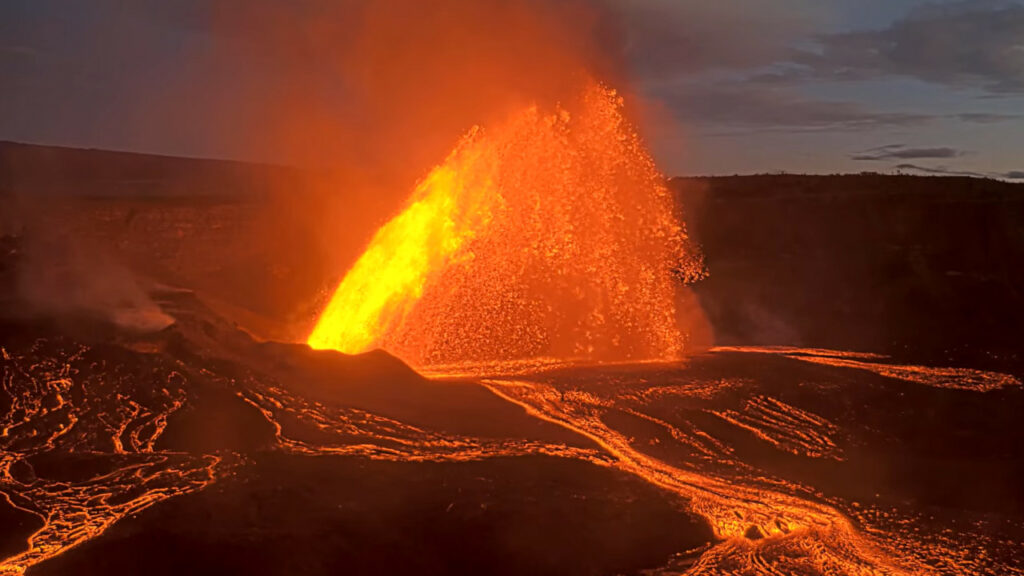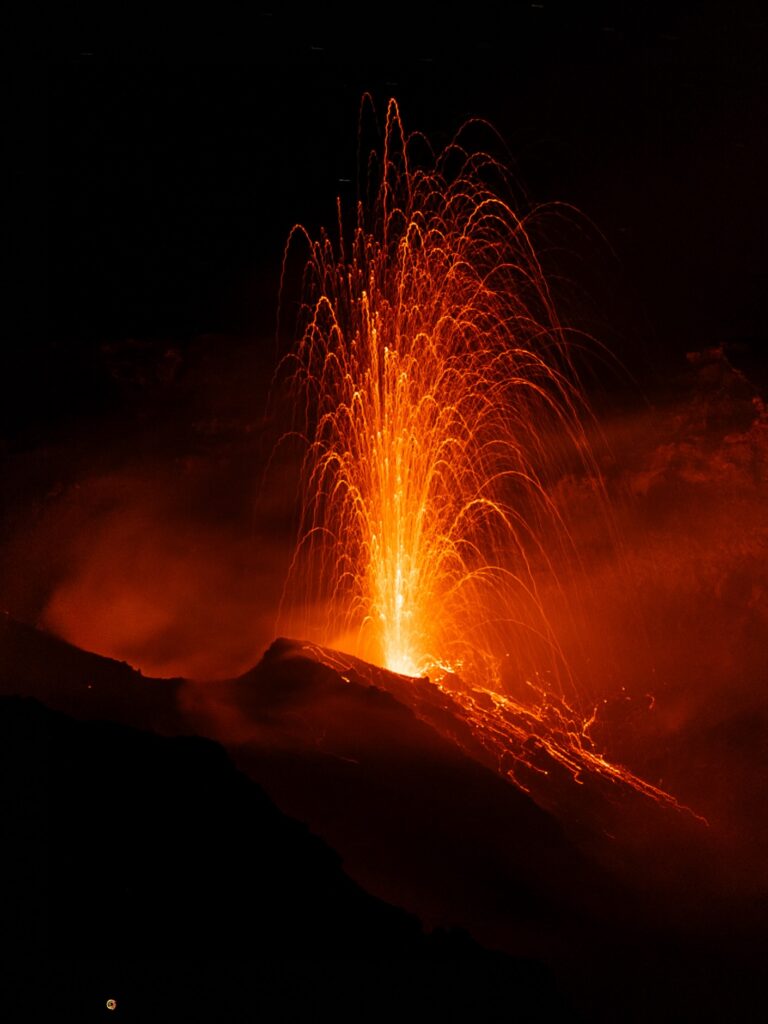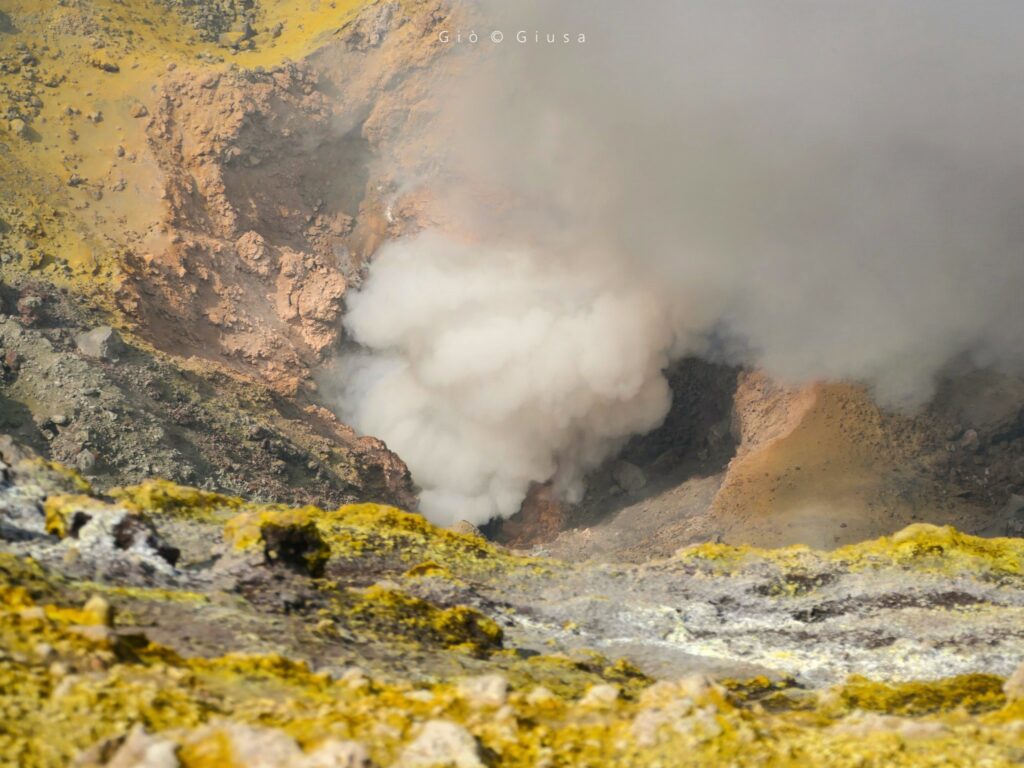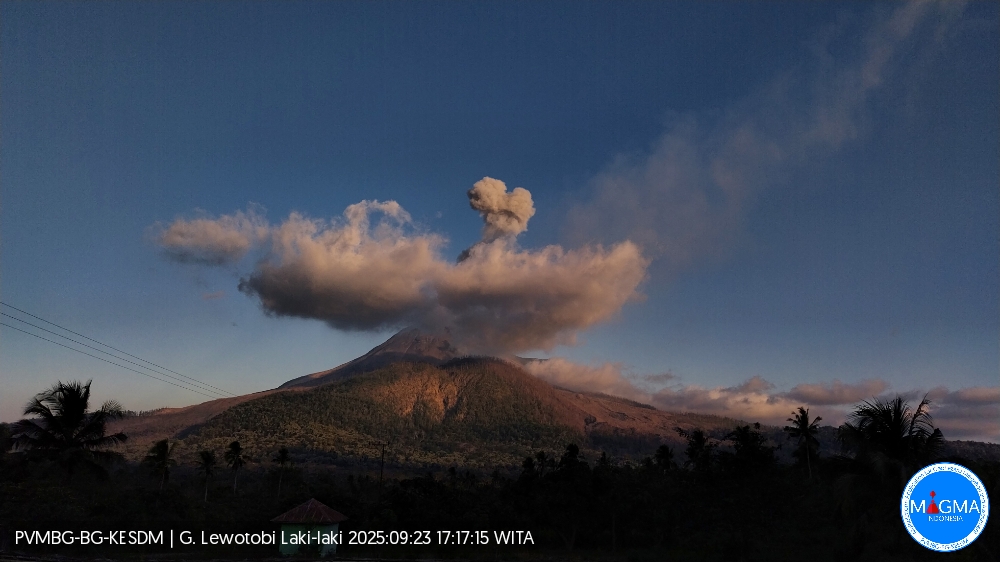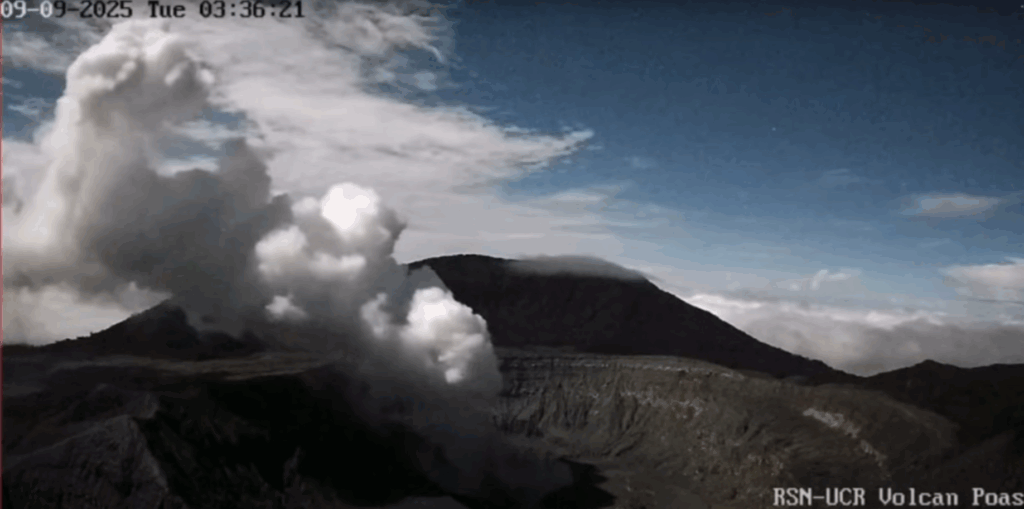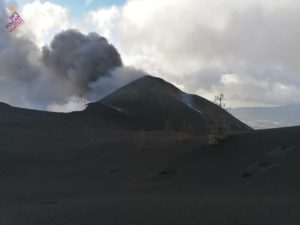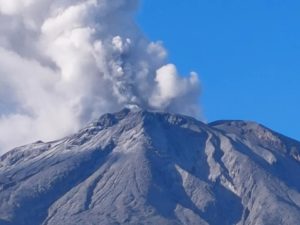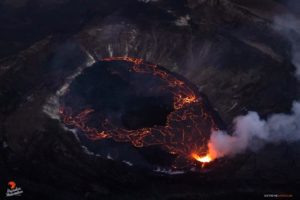September 24 , 2025.
Hawaii , Kilauea :
HAWAIIAN VOLCANO OBSERVATORY DAILY UPDATE , U.S. Geological Survey
Monday, September 22, 2025, 8:58 AM HST (Monday, September 22, 2025, 18:58 UTC)
19°25’16 » N 155°17’13 » W,
Summit Elevation 4091 ft (1247 m)
Current Volcano Alert Level: WATCH
Current Aviation Color Code: ORANGE
Activity Summary:
Episode 33 lava fountaining ended on Friday, September 19, after approximately 9 hours of high fountains. Glow from the vents was observed overnight. The summit is reinflating, and models indicate that episode 34 is likely to start between September 28 and October 1.
Summit Observations:
Episode 33 lava fountaining ended at 12:08 p.m. HST on Friday, September 19. The UWD tiltmeter shows that the summit has been reinflating since the end of the fountaining episode, with 7 microradians of inflationary tilt. This morning, the caldera is quiet with a passive outgassing plume rising from the vents. Overnight, HVO webcams showed that glow was present in the south and north vents.
Elevated degassing continues from the vent. Average sulfur dioxide (SO2) emission rates during pauses are typically 1,200 to 1,500 t/d, though emission rates can vary on short time scales.
Volcanic Activity Summary:
Episode 33 of the ongoing Halemaʻumaʻu eruption ended abruptly at 12:08 p.m. HST on September 19 after just under 9 hours of continuous fountaining.
The north vent stopped erupting at approximately 12:08 p.m. HST. The south vent stopped erupting at approximately 6:00 a.m. HST this morning after a few intermittent outbursts. Lava fountains reached up to 700–800 feet (210–240 meters) during the early hours of the eruption, making these the highest fountains since episode 28 in July. The north vent fountain was tilted at about 60 degrees to the east, which is less than the 30–45 degree tilts of the episode 31 and 32 fountains. After the initial stages, the fountain height remained around 300–400 feet (90–120 meters) high during most of this episode. Approximately 8.25 million cubic yards (6.3 million cubic meters) were erupted during episode 33 and lava flows covered about 2/3 of the floor of Halemaʻumaʻu crater.
Volcanic gas emissions have greatly decreased since the eruption stopped. Lava flows from this episode on the floor of Halemaʻumaʻu, within the southern part of Kaluapele (Kīlauea caldera), may continue to exhibit slow movement or incandescence as they cool and solidify over the coming days.
The Uēkahuna tiltmeter (UWD) recorded about 16.5 microradians of deflationary tilt during this episode. The end of the episode was coincident with a rapid change from deflation to inflation at the summit and a decrease in seismic tremor intensity at 12:08 p.m. HST, at the same time fountaining stopped.
Source : HVO
Photo : USGS
Italy , Stromboli :
WEEKLY BULLETIN, September 15-21, 2025. (Publication date: September 23, 2025)
ACTIVITY SUMMARY
Based on monitoring data, the following points are highlighted:
1) VOLCANOLOGICAL OBSERVATIONS: During this period, ordinary Strombolian eruptive activity was observed. The total hourly frequency ranged from low (4 events/h) to medium (12 events/h). The intensity of the explosions was low and medium in the North and South-Central crater areas.
2) SEISMOLOGY: The monitored seismic parameters show no significant variation.
3) GROUND DEFORMATION: No significant variation is reported in the ground deformation time series.
4) GEOCHEMISTRY: SO₂ fluxes at an average level. Soil CO₂ flux in the Pizzo area (STR02): No update.
C/S ratio in the plume: No update. The most recent data are at average values (September 9).
Helium isotope ratio (R/Ra): High values (September 16).
Soil CO2 flux in the Scari area: Average values.
5) SATELLITE OBSERVATIONS: Thermal activity observed by satellite in the summit area was generally low to moderate.
VOLCANOLOGICAL OBSERVATIONS
During the observation period, Stromboli’s eruptive activity was characterized by analyzing images recorded by the INGV-OE surveillance cameras located at an altitude of 190 m (SCT-SCV) and at Punta dei Corvi (SPCT). The cameras located at an altitude of 190 m (SCT-SCV) experienced a video signal interruption from 23:36 UTC on September 20 until the end of the observation period.
Explosive activity was mainly produced by four eruptive vents located in the northern area of the crater and by at least two vents located in the central-southern area.
Observations of explosive activity captured by surveillance cameras
In the northern area of the North (N) crater, four active vents were observed, producing low-intensity explosive activity (less than 80 m in height) and sometimes medium-intensity explosive activity (less than 150 m in height). The eruptive products consisted mainly of coarse materials (bombs and lapilli). The average explosion frequency ranged from 2 to 8 events/h.
In the Central-South (CS) crater area, two main vents were observed, exhibiting medium- to low-intensity fine-material explosions and coarse-material explosions. Some vent explosions containing coarse materials exhibited a wide distribution of products reaching the edges of the crater terrace. The average explosion frequency ranged from 2 to 5 events/h.
Source : INGV
Photo : Stromboli stati d’animo / Sebastiano Cannavo
Italy / Sicily , Etna :
WEEKLY BULLETIN, September 15-21, 2025. (Publication date: September 23, 2025)
ACTIVITY SUMMARY
Based on monitoring data, the following points are highlighted:
1) VOLCANOLOGICAL OBSERVATIONS: Variable degassing rate in the summit craters.
2) SEISMOLOGY: Absence of seismic activity due to fracturing with Ml >=2.0. Tremor amplitude of medium intensity.
3) INFRASOUND: Moderate infrasound activity.
4) GROUND DEFORMATION: No significant variation is reported in the ground deformation time series.
5) GEOCHEMISTRY: Medium intensity SO₂ fluxes.
Soil CO₂ fluxes: Low values.
Partial pressure of dissolved CO₂ in groundwater: No update available.
Helium isotope ratio at peripheral sites: No update available.
6) SATELLITE OBSERVATIONS: Satellite-observed thermal activity in the summit area was generally low, with some isolated thermal anomalies of moderate intensity.
VOLCANOLOGICAL OBSERVATIONS
During the observation period in question, Mount Etna’s volcanic activity was monitored through the analysis of images from the INGV surveillance camera network (Etna Observatory INGV-OE).
During the observation week, the activity of the summit craters remained essentially the same as that described in the previous week’s bulletin (Rep. No. 38/2025 ETNA): the summit craters were characterized by variable degassing at each crater.
The Northeast Crater (CNE) in particular experienced intense degassing, generated by a vent located at the crater floor. However, the other craters exhibited less intense diffuse degassing, mainly attributable to various fumarolic systems, while the Bocca Nuova Crater (BN) exhibited degassing primarily generated by the pit crater BN1.
Source : INGV
Photo : Gio Giusa .
Indonesia , Lewotobi Laki-laki :
An eruption of Mount Lewotobi Laki-laki occurred on Tuesday, September 23, 2025, at 5:14 p.m. (local time). An ash column was observed about 1,000 m above the summit (about 2,584 m above sea level). The ash column was gray and of strong intensity, moving westward. This eruption was recorded by seismograph with a maximum amplitude of 3.7 mm and a duration of 100 seconds.
VOLCANO OBSERVATORY NOTICE FOR AVIATION – VONA
Issued : September 23 , 2025
Volcano : Lewotobi Laki-laki (264180)
Current Aviation Colour Code : ORANGE
Previous Aviation Colour Code : orange
Source : Lewotobi Laki-laki Volcano Observatory
Notice Number : 2025LWK443
Volcano Location : S 08 deg 32 min 20 sec E 122 deg 46 min 06 sec
Area : East Nusa Tenggara, Indonesia
Summit Elevation : 5069 FT (1584 M)
Volcanic Activity Summary :
Eruption with volcanic ash cloud at 09h14 UTC (17h14 local).
Volcanic Cloud Height :
Best estimate of ash-cloud top is around 8269 FT (2584 M) above sea level or 3200 FT (1000 M) above summit. May be higher than what can be observed clearly. Source of height data: ground observer.
Other Volcanic Cloud Information :
Ash cloud moving to west. Volcanic ash is observed to be gray. The intensity of volcanic ash is observed to be thick.
Remarks :
Eruption recorded on seismogram with maximum amplitude 3.7 mm and maximum duration 100 second.
Source et photo : Magma Indonésie .
Costa Rica , Poas :
Latitude: 10.20°N;
Longitude: 84.23°W;
Altitude: 2,687 m
Current Activity Level: Alert
No eruption has been recorded since last week, when an explosion occurred on Tuesday, September 9.
The amplitude of the background seismic tremor remains stable compared to recent months. Acoustic tremor is almost nonexistent. This week, two proximal volcano-tectonic events were located south of the Botos cone, at depths close to sea level. The number of long-period events has decreased compared to last week.
The geodetic network is currently not recording any significant deformation.
MultiGAS stations measured an average SO₂/CO₂ ratio of 1.5 ± 0.7 this week, slightly lower than the previous week (0.95 ± 0.5). The H₂S/SO₂ ratio has remained very low (< 0.1) in recent weeks. The ExpoGAS station, located on the visitor observation deck, measured a maximum of 5.0 ppm SO₂ this week. DOAS stations measured an SO₂ flux of 243 ± 175 t/d, similar to the previous week (227 ± 113 t/d). In addition, satellite measurements of atmospheric SO₂ returned to a high level, peaking at 523 tonnes on September 18.
This week, the lake level dropped significantly. Rapid variations and an increase in bubbling convective activity were observed at outlet C. The appearance of new water-saturated fumarole fields at the crater floor around outlet A was also observed. The temperature of the lake reached nearly 80 °C, and that of the sulfur-rich fumaroles exceeded 210 °C.
Source : Ovsicori .
Photo : RSN , Capture d’écran 2025-09-15

